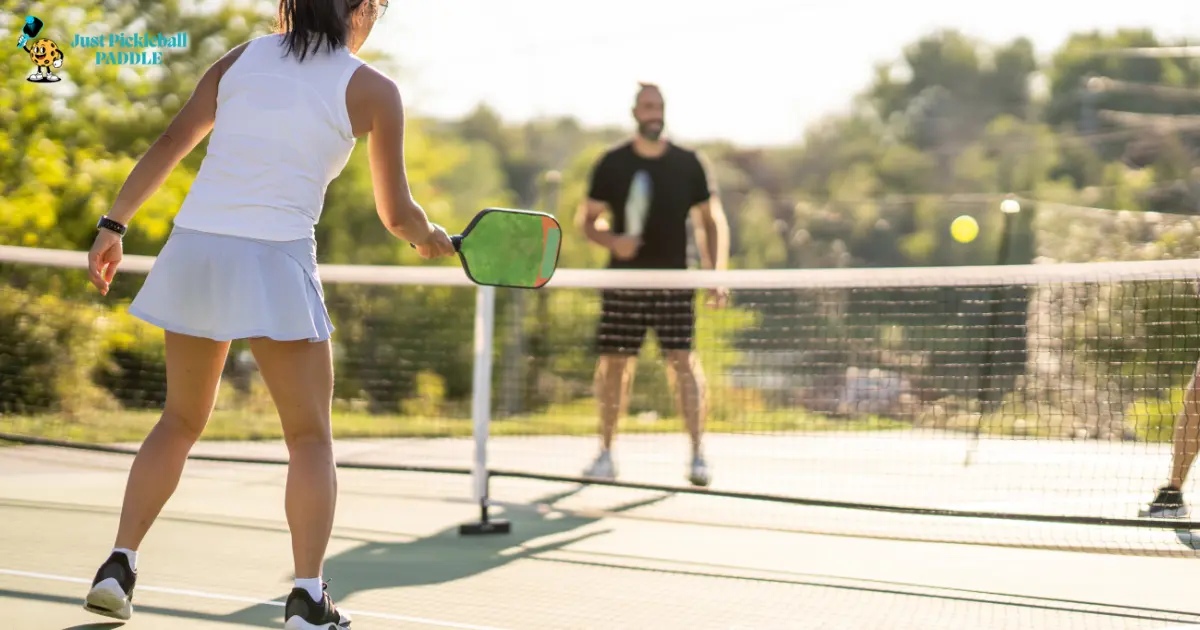If you’ve played pickleball doubles, you already know how exciting and fast-paced the game can be. But singles is a whole new challenge—it’s more intense, physically demanding, and strategic. With only you on the court, every shot and decision counts.
There’s no partner to rely on, which means mastering singles play requires sharp focus, quick movement, and smart shot selection.
Whether you’re just starting with singles or looking to elevate your game, understanding the strategies and rules unique to singles pickleball is essential.
In this post, I’ll guide you through everything you need to know to excel at one-on-one play. You’ll learn the key rules, serving techniques, movement drills, and shot strategies needed to stay competitive and control the court.
By the end of this guide, you’ll have a solid game plan for improving your performance and enjoying the challenge of singles play. Whether you’re playing for fun or training to compete, mastering these techniques will help you become a more complete and confident player on the court.
Rules of Pickleball Singles
The rules of singles in pickleball closely resemble those of doubles, but there are a few important differences that make singles a more physically demanding and strategic game. Understanding these differences will help you play more effectively and gain an edge over your opponents.
Serving Rule in Singles Pickleball
In singles pickleball, the serve is essential for gaining control of the rally. At least one foot must remain grounded behind the baseline during the serve, with no jumping allowed. The paddle must hit the ball below the wrist and waist to ensure a legal underhand serve.
Players can also use a drop serve, where the ball is released naturally from the hand without being thrown down to create an unfair bounce. The serve must travel diagonally into the opponent’s service box and land beyond the kitchen line.
If the ball touches the kitchen line, it results in a fault. An accurate serve gives the server an early advantage in the rally.
Two-Bounce Rule
The two-bounce rule helps keep the game fair and fun by making sure both the server and receiver let the ball bounce once on their side before hitting it. Once the ball has bounced on both sides, players are free to volley (hit the ball out of the air).
This rule keeps things balanced by preventing players from rushing the net right after the serve, giving everyone a chance to set up their shots and plan their next move. It encourages smarter play and better positioning throughout the rally.
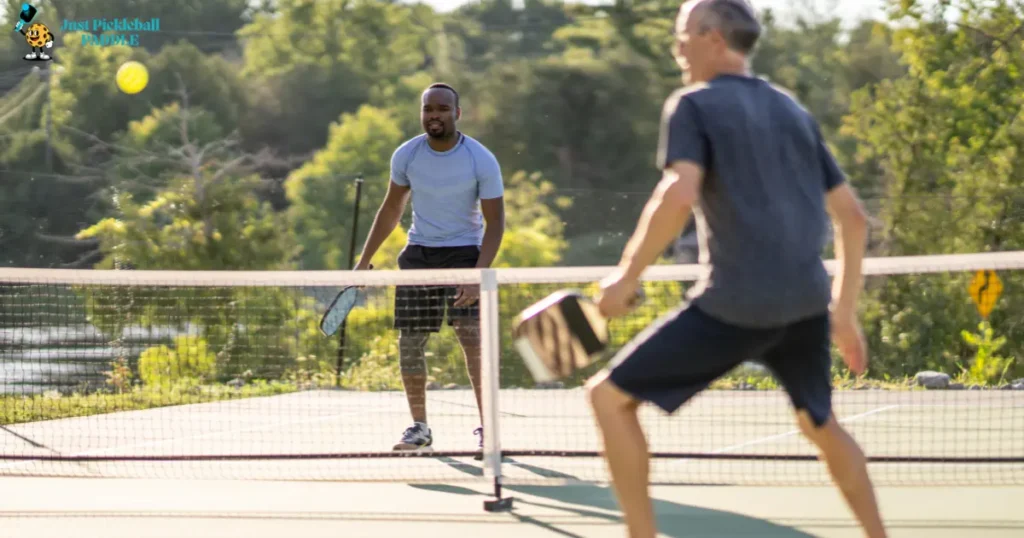
Kitchen Rule (Non-Volley Zone) Explained
The kitchen also known as the non-volley zone, is there to keep things fair by stopping players from hitting volleys while standing inside it or touching the kitchen line. Even if you hit a volley from outside the kitchen, your momentum can’t carry you into the kitchen afterward. If it does, it’s a fault—even if you made the shot!
You’re allowed to step into the kitchen to grab a ball that bounces inside, but you need to step back out and have both feet re-established outside the kitchen before hitting the next volley.
This rule makes things more interesting, adding a bit of strategy and requiring smooth movement to stay in control and avoid faults.
For more details: Pickleball Kitchen Rules.
Scoring System in Singles Pickleball
In singles pickleball, the game goes to 11 points, but you’ll need a two-point lead to win. If the score reaches 10-10, the battle isn’t over yet—play continues until one player pulls ahead by two points, like 12-10.
Only the server can score, so if you lose a rally while serving, it’s called a side-out, and your opponent takes over the serve, though they don’t earn a point from it.
This scoring system makes every rally count, especially in tight matches where even a small mistake can turn things around. Staying focused and playing smart is the key to keeping momentum on your side and coming out on top!
Court Positioning and Boundaries in Singles Pickleball
In singles pickleball, you’re on your own to cover the entire court, which means you need to stay quick and alert after every shot. You’ll be moving constantly to maintain good positioning, covering everything from the baseline to the sidelines.
The centerline only matters for serves—during rallies, it’s all about being prepared to move wherever the ball goes.
Staying in a good position helps you recover quickly after each shot and prevents you from leaving open spaces for your opponent to take advantage of. Smart movement will keep you in control and ready for whatever comes your way!
Faults and Penalties in Singles Pickleball
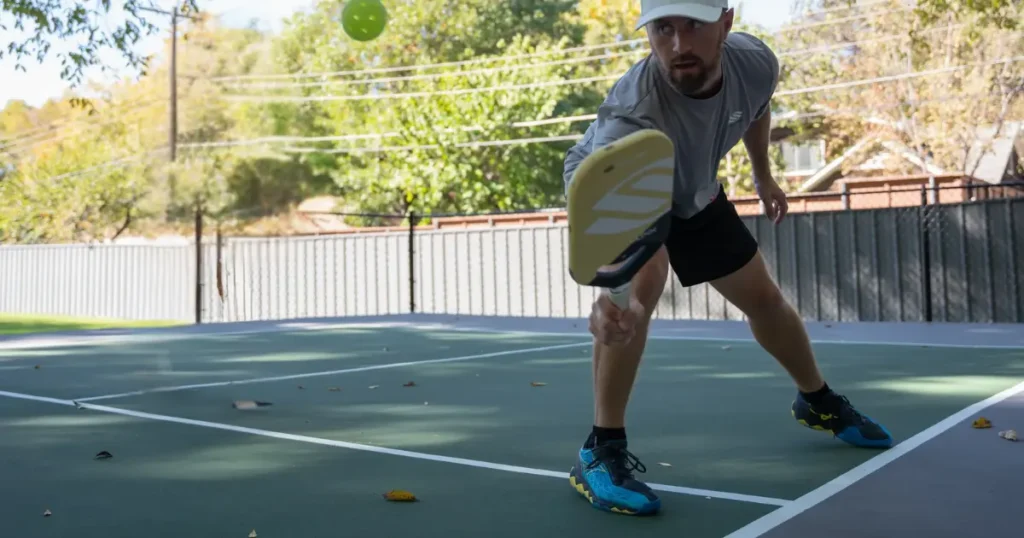
In singles, faults can change the momentum fast since you don’t have a partner to back you up. One common mistake is a foot fault, which happens if you step on or over the baseline while serving.
Kitchen violations are another thing to watch out for—hitting a volley while inside the kitchen or getting carried into it by your momentum will cost you the point.
Other faults include missing the diagonal target on a serve, landing the ball on the kitchen line, or letting it bounce twice on your side.
Avoiding these mistakes is key, as every fault hands control of the serve to your opponent and gives them a chance to shift the momentum in their favor. Keep it clean, stay sharp, and you’ll keep things moving your way!
Mastering the rules of singles pickleball is essential to play with confidence and efficiency. When you understand the serving mechanics, scoring system, and court positioning required, you’ll be better prepared to compete in singles matches and stay one step ahead of your opponent.
How to Play Pickleball Singles
Singles Pickleball Strategies
In singles pickleball, mastering key skills and strategies are essential since you’re covering the entire court on your own. Your serve, shot selection, and ability to switch between offense and defense are crucial for staying in control of the game.
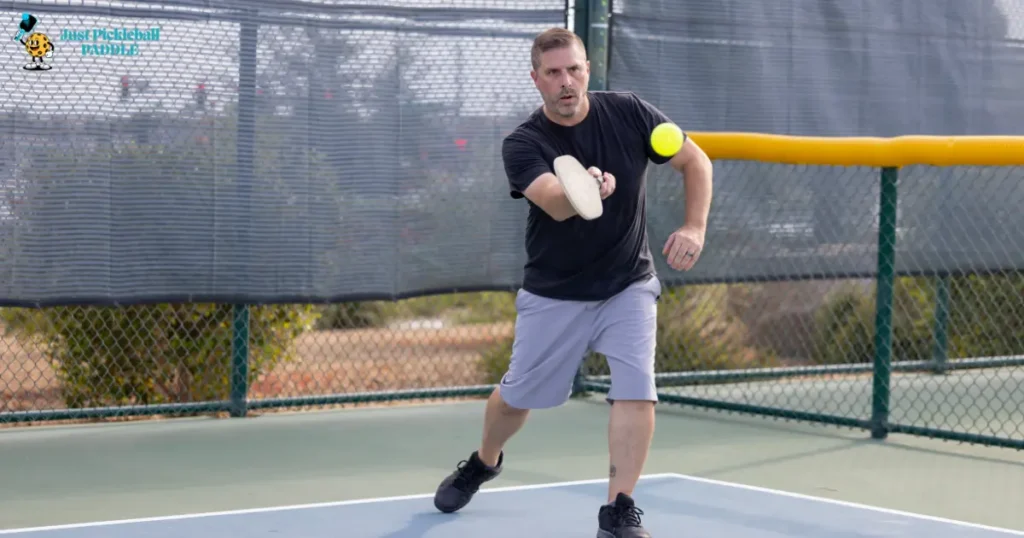
A well-placed serve can set the tone for the entire rally. Mixing fast drive serves with high lob serves keeps your opponent on their toes, while targeting their weaker side—like their backhand—can give you an early edge. Consistency and precision help you stay in control and dictate the pace right from the start.
Smart shot selection is just as important. Use deep groundstrokes to push your opponent back, volleys at the net to apply pressure, and dinks near the kitchen to slow the game down. Mixing up your shots keeps your opponent guessing and makes it harder for them to predict your next move.
Knowing when to switch between offense and defense is also key. Use aggressive shots to stay on the attack when you’re in a good position, but if you’re under pressure, a lob or soft drop shot can help you reset and recover. This balance keeps you flexible and makes it tougher for your opponent to keep up.
By practicing these skills, you’ll develop into a well-rounded singles player, ready to play smart and confidently no matter the situation.
Advanced Techniques for Single Pickleball Players
Once you’ve mastered the basics, advanced techniques like spin, deception, and stamina can elevate your singles play.
Adding topspin keeps the ball low, making it harder for your opponent to return with control. Precise placement—aiming for corners or just over the net—forces your opponent out of position, giving you the chance to attack.
Deception is another powerful tool, especially on the net. A subtle fake, like pretending to hit cross-court but sending it down the line, can catch your opponent off guard. This unpredictability works well near the kitchen, where timing is crucial.
Conditioning and stamina are essential since covering the court alone demands more endurance. Interval training and on-court drills will help you stay sharp, especially during long matches. The ability to maintain focus and energy in the final stages often separates good players from great ones.
Common Mistakes and How to Avoid Them in Single Pickleball
Even experienced players make mistakes in singles play, but recognizing these errors and knowing how to correct them can improve your game significantly.
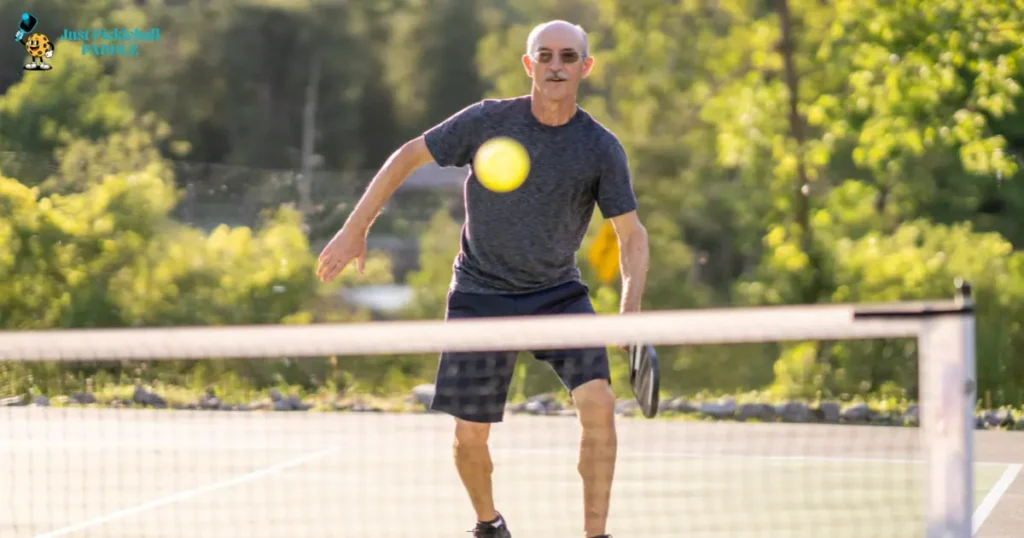
One of the most frequent issues is poor shot selection. Many players go for risky, low-percentage shots when a safer option would keep them in the rally. Instead of attempting a difficult winner, focus on keeping the ball in play and waiting for the right opportunity to attack.
Consistency is key in singles—forcing your opponent to make the mistake often works better than trying to end the point too soon.
Another common challenge is inconsistent serves. A serve that goes out of bounds or falls short can hand the momentum to your opponent. To improve your consistency, practice your serve regularly, experimenting with different techniques and placements to keep your opponent guessing. Staying calm under pressure will also help you avoid double faults during crucial moments.
Finally, poor positioning can quickly derail your game. Standing still after hitting a shot or failing to return to a neutral position leaves you vulnerable to your opponent’s next move.
Always anticipate where the ball might go and reposition yourself accordingly. Practicing movement drills will help you stay agile and ready for whatever comes your way.
By avoiding these common mistakes and focusing on consistency, smart positioning, and strategic shot selection, you’ll be able to play more confidently and effectively in singles matches.
FAQs
In singles, each player covers the entire court alone, making the game more physically demanding and reliant on individual skills. In doubles, teammates share court coverage, allowing for more strategic teamwork. Singles also have slightly different serving rules, as only the server can score points.
The serve is typically determined by a coin toss, the spin of the paddle, or mutual agreement. The winner of the toss decides either to serve first or pick a side of the court, with the opponent choosing the remaining option.
Just like in doubles, stepping into the kitchen while hitting a volley results in a fault. In singles, this gives the point to your opponent or transfers the serve, depending on who committed the fault.
In singles, the court dimensions remain the same—20 feet wide by 44 feet long—but with fewer players, you’ll have to cover the entire width and length by yourself, which adds to the physical challenge.
Conclusion
Playing singles pickleball is both physically demanding and mentally challenging, requiring a combination of strategy, quick movement, and precise shot selection. Unlike doubles, you have to cover the entire court yourself, making it essential to master effective serves, smart positioning, and a mix of offensive and defensive shots.
Building stamina and staying unpredictable with techniques like spin and deception can give you the upper hand during crucial rallies.
By practicing consistently, refining your skills, and learning to read your opponent’s patterns, you’ll develop a game plan that works for you.
Whether you’re new to singles or aiming to improve, the key is to stay focused, maintain control, and enjoy the one-on-one challenge. With time and dedication, you’ll be ready to dominate the singles court and elevate your overall pickleball game.

